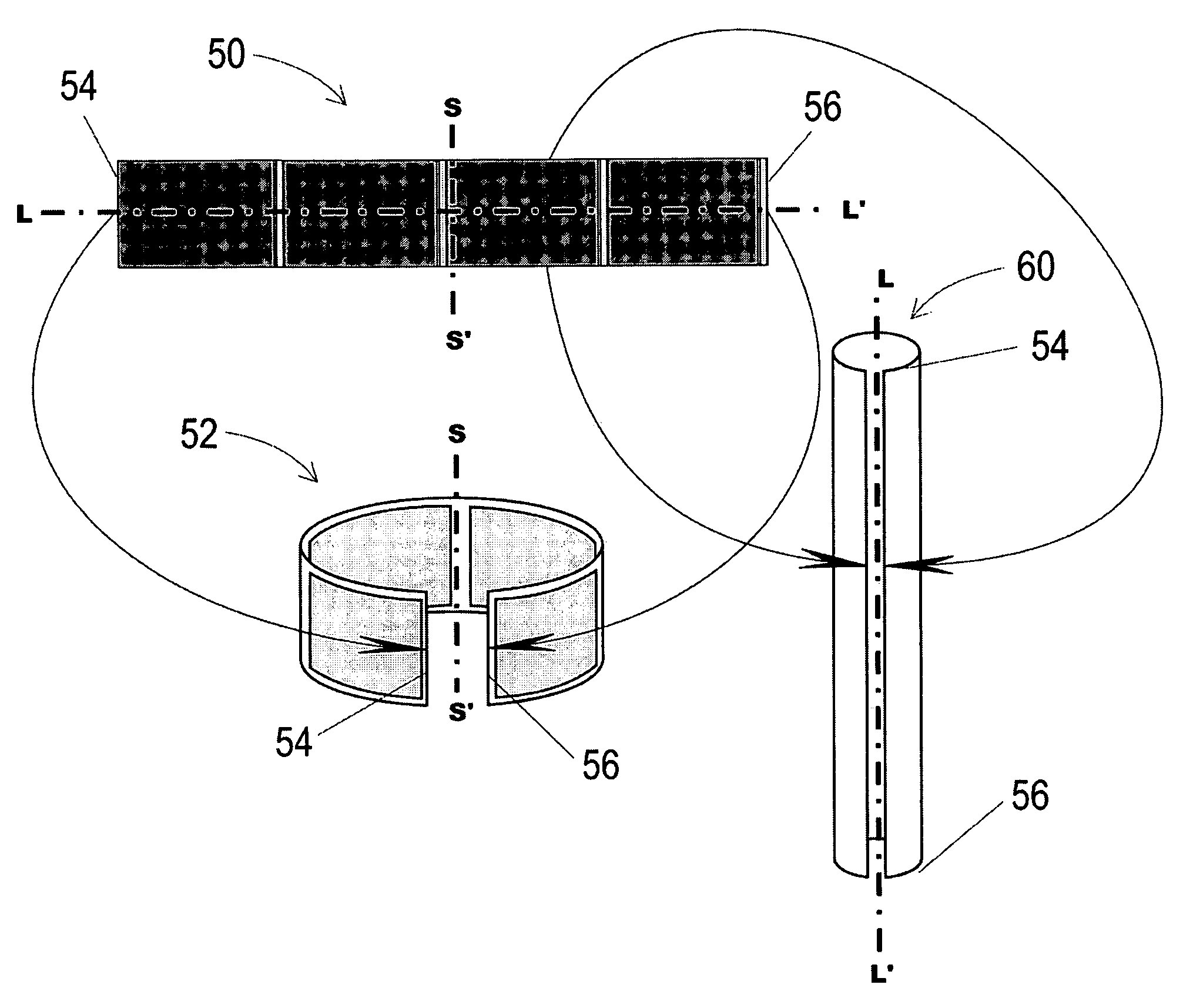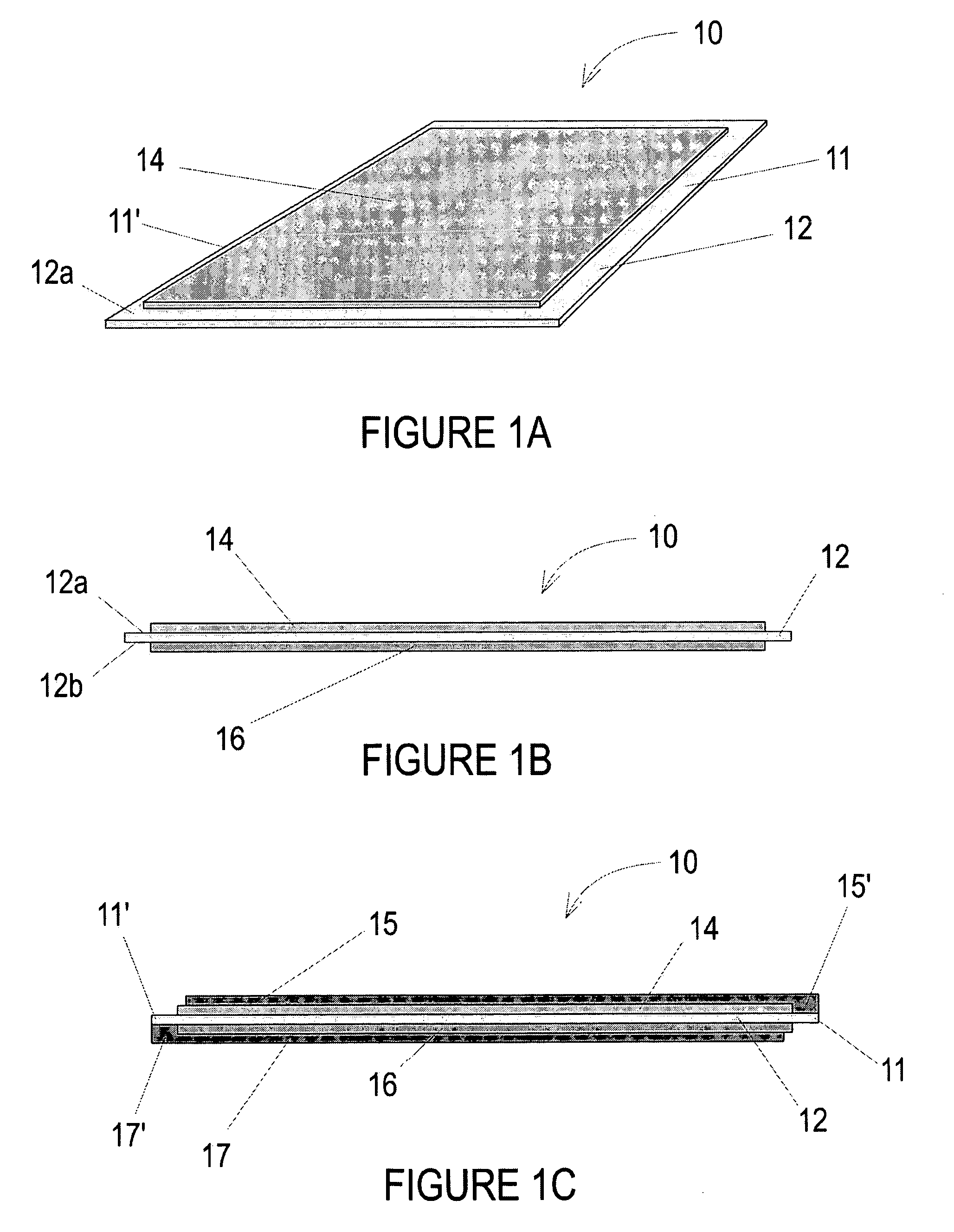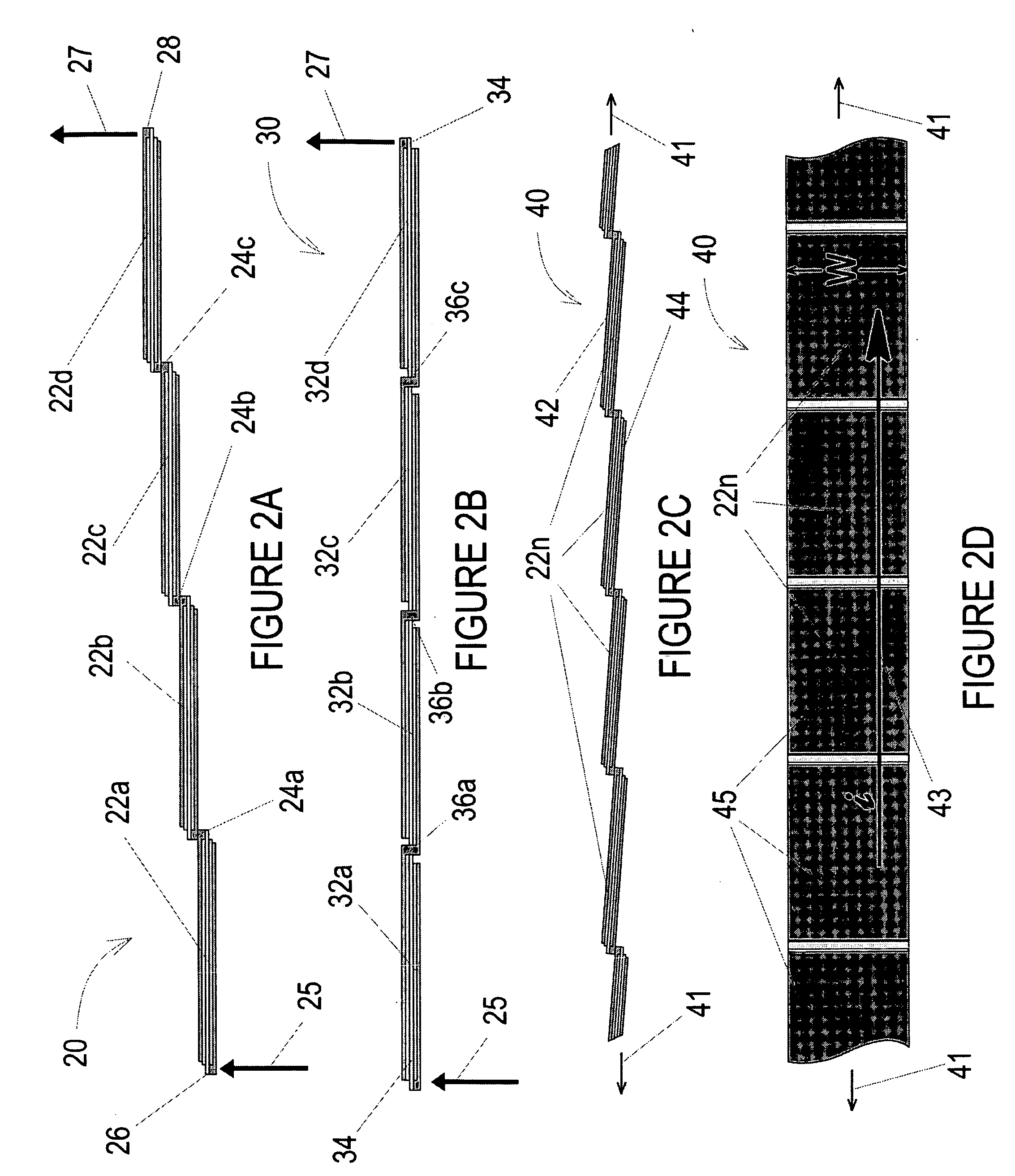Light-weight, flexible edge collected fuel cells
a fuel cell and flexible edge technology, applied in the field of polymeric fuel cells, can solve the problems of stack failure, increased weight of fuel cell stack, and high efficiency limits of thermodynamics, and achieves the effect of reducing the number of fuel cell stack failures and reducing the efficiency of the fuel cell stack
- Summary
- Abstract
- Description
- Claims
- Application Information
AI Technical Summary
Problems solved by technology
Method used
Image
Examples
embodiments
[0059]The flexible design of the present polymeric fuel cell invention allows for novel embodiments more complex than the basic ones of flat individual fuel cells and fuel cell stacks.
[0060]FIG. 3A shows an exemplary four cell ribbon stack 50 having a major or long axis L-L′ and a minor or short axis S-S′. The stack 50 could consist of any number of individual fuel cell repeat units, arranged so as to have first and second terminal electrical edge connectors 54,56 where into and from current arrives and departs the stack. Said edges 54,56 are oriented parallel to the axis S-S′. The stack 50 can be bent around its short axis S-S′ to produce a short cylindrical 52 of radially connected fuel cells, or it can be bent around its long axis to provide a long cylindrical stack 60 of axially connected fuel cells. Such cylindrical shapes could be circular in cross section or they could be oval or of any other cross-sectional shape, given the flexibility of the basic fuel cell design.
[0061]FIG...
PUM
 Login to View More
Login to View More Abstract
Description
Claims
Application Information
 Login to View More
Login to View More - R&D
- Intellectual Property
- Life Sciences
- Materials
- Tech Scout
- Unparalleled Data Quality
- Higher Quality Content
- 60% Fewer Hallucinations
Browse by: Latest US Patents, China's latest patents, Technical Efficacy Thesaurus, Application Domain, Technology Topic, Popular Technical Reports.
© 2025 PatSnap. All rights reserved.Legal|Privacy policy|Modern Slavery Act Transparency Statement|Sitemap|About US| Contact US: help@patsnap.com



